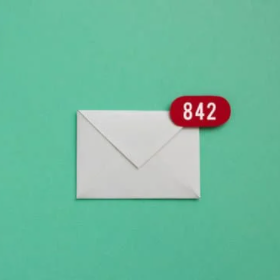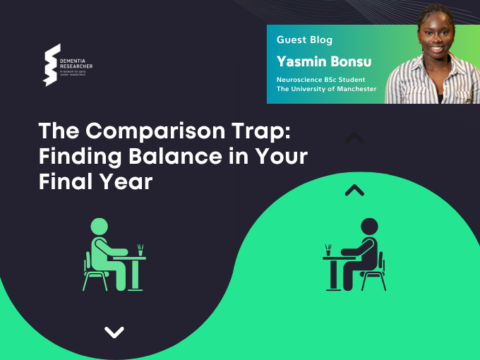In this blog I am going to explore how you might go about emailing an academic or colleague you have never met, when you want something from them, and how to get the best possible chance of a positive reply, exploring the dark art of crafting the perfect ‘cold email’.
This blog really comes off the back of a few things… Firstly I receive quite a lot of messages asking for help, usually around how to go about finding a new job, grant writing etc. I like to help, and recently I’ve had lots of meetings with clever, bright, enthusiastic young-people (god that makes me sound old), and every time, one of the takeaway actions was for that person to seek out people to email.
Next, I recently read a great blog on the Thesis Whisperer website, titled ‘The art of the cold call email’, and I loved it, in fact, I love all the blogs on that website.
So when might you need to cold email? Well there are lots, but lets look at the obvious ones a. To ask for a job, or to be kept in mind for a job, or for someone to supervise you b. To get feedback or help on a project or paper you’re writing or c. To ask for someone’s input e.g. I often have to email people to be guests on our podcast.
To start, I think it is important to think about who you are sending the email to, and what they have to contend with. If they are anything like me, and many other academics, they’ll be busy, but always keen to help. So the first rule…

A recent poll found 22% of people say that they have no unread emails in their inbox currently, while 26% have less than ten unread emails. 27% have between 10 and 49, while 19% have between 50 and 999 unread e-mails. Only 6% say that their unread email total tops 1,000.
Make your ask clear and your request actionable – if your email is complicated, unclear and rambling, it will probably languish in the bottom of that persons in box. They won’t want to be rude, so they probably won’t reply to say no, in fact, the truth is, they probably just won’t reply at all. The Thesis Whisperer Blog makes the point quite well “If you have a request to make of a busy person, state it as clearly (and politely) as you can. Don’t include ‘side threads’ – if you want something, make the email about that. If you have multiple requests of the same person, send multiple emails (maybe not on the same day). I know this sounds like it would be more bothersome, but trust me: your email is more likely to get attention if it’s about one request.”
The next rule is to think about, is who you are directing it to, and if it is reasonably something they might do – is the person you are emailing the best person for the job e.g. a senior academic you have never met, probably won’t review a grant application for you, but a colleague might, and an extra point here, is to make the email specific to them, do not use copy and paste, and then risk the ultimate faux pas, but forgetting to change the name of the person you’re emailing.
Then we come to length and context, you may have a massive back story, but think hard about how much of that you put into the first email – you can add detail at a later stage, but right now, you just want to get them engaged and start a conversation. Start with a small ask… and build up to a big one, build a relationship – and don’t be too self-indulgent, about your own work.
Moving on, we come to, why them? It helps to make it clear, why you chose them, and a little flattery can go a long way. You could mention that you saw them present, maybe that you read a paper they wrote, or that you follow them on twitter and admire their work.
So to recap:
- Be concise and short
- Make your ask clear, and actionable
- Avoid being self-indulgent
- Explain why you chose them
- Make it okay for them to say no
- Ask if they could recommend someone else if they can’t help
Before we move on… I just want to go back to the ‘ask’, what do you actually want? If it is a job, you probably won’t get a job from that email. But, you might ask for 15 minutes of their time to get advice, then in the meeting you can drop the line ‘keep me in mind’ there will be HR processes that still need to be followed. If you want them to be your supervisor you can probably be a little more direct, but again, I think the aim of a cold email, should be to get more time to build up to the big ask.
Finally, ask yourself, is email the best way? Or the best place to start? If they’re a social media user, you could DM them, or tag them, like a few of their posts first. If someone sees that their posts are always being liked by someone, it is human nature that they will look at your posts, and at your bio to see who is so interested in them – so make sure you are tweeting good stuff that might impress them, and have a good bio (which is more than just your first name, and where you live, with a picture of the ocean) – hey you never know, if they start to follow you back, and see your post that you’re looking for a supervisor, they may email you… wouldn’t that be cool! If you are feeling really brave, and think you have a tweet that they would genuinely be interested in, they you could tag them, but be selective… don’t be one of those people who tags for your own benefit, do it if you genuinely think they should see it.
So good luck, and last of all, don’t be afraid, cold emails are standard practice in academia, they will expect it – get it right, and you’ll get the engagement you want.
Author
Adam Smith was born in the north, a long time ago. He wanted to write books, but ended up working in the NHS, and at the Department of Health. He is now Programme Director in the Office of the NIHR National Director for Dementia Research (which probably sounds more important than it is) at University College London. He has led a number of initiatives to improve dementia research (including this website, Join Dementia Research & ENRICH), as well as pursuing his own research interests. In his spare time, he grows vegetables, builds Lego & spends most of his time drinking too much coffee and squeezing technology into his house.
What would you put in your email? Reply in the box below

 Print This Post
Print This Post




